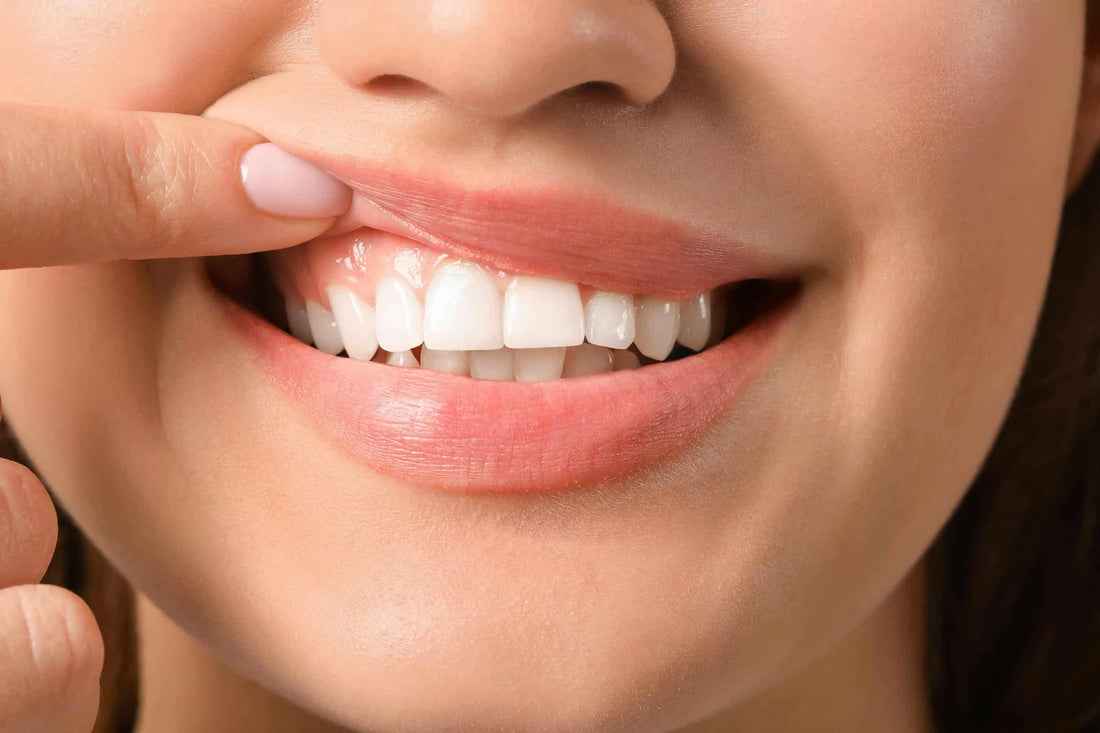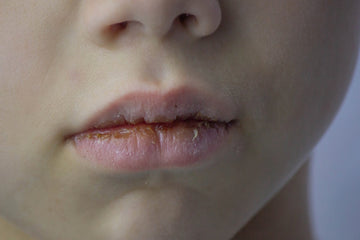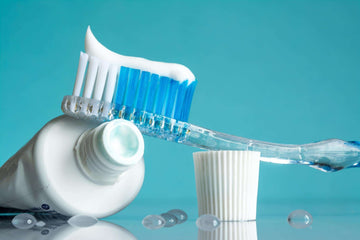Discoloured Gums: All the Symptoms, Causes & the Right Treatment

Gums are naturally all different shades and usually are nothing to worry about.
Having darker skin can also contribute to gum blackening— so in many cases, it’s completely natural.
However, if you notice a change in the colour and texture of your gums, it might be worth getting a professional opinion.
If you need to know more about discoloured gums and what they mean for your oral health, Dr Sanjay Patel, dentist and CEO at Enlighten, has put together a guide. It covers the causes, treatment options and what you should consider doing next.
Symptoms of discoloured gums
Aside from the darkening of the gums, you may experience additional symptoms including:
1. Dark pigmentation
The gums take on a darker hue, ranging from deep brown to black or even grey. This is often noticeable when compared to the typical healthy pink colour of gums. The dark pigmentation may be uniform across the gums or appear in distinct areas.
2. Uneven colouration
Instead of being uniformly coloured, the gums may have irregular patches, spots, or streaks of discolouration. These uneven areas may vary in size and intensity, and their appearance can sometimes indicate underlying health conditions or external factors like smoking or dental trauma.
3. Swelling or tenderness
In cases where discoloured gums are linked to inflammation, the affected areas may feel swollen or tender to the touch. This is often a sign of gum disease or irritation caused by plaque buildup, infections, or injury.
4. Bleeding
Gums with discolouration may also bleed more easily, particularly during activities like brushing, flossing, or eating hard foods. This bleeding can indicate issues like gingivitis, periodontitis, or other oral health concerns.
5. Bad breath (Halitosis)
Persistent bad breath may accompany discoloured gums, especially if the condition is associated with gum disease or poor oral hygiene. The odour results from bacteria accumulating in the mouth, which can exacerbate discolouration and other symptoms.
6. Pain or discomfort
While not always present, some individuals with discoloured gums may experience intermittent pain, irritation, or sensitivity. These sensations can occur due to infection, inflammation, or exposure to irritants like tobacco or harsh dental products.
Causes of discoloured gums
Discoloured gums can result from various factors, ranging from harmless genetic traits to more serious medical conditions.
Here’s a detailed breakdown of the potential causes:
1. Natural pigmentation
People with darker skin tones often have higher melanin levels, which can result in naturally dark or black gums. This is completely normal and does not indicate any health issues.
2. Smoking (Smoker’s Melanosis)
Smoking can stimulate melanin production, leading to dark patches or generalised darkening of the gums. The condition is more common in heavy smokers and may fade if smoking is stopped.
3. Gum disease
Conditions like gingivitis or periodontitis can cause inflammation, bleeding, and dark discolouration of the gums. The darkening may result from prolonged inflammation or tissue damage.
4. Medication side effects
Certain medications — particularly antimalarial drugs (e.g., chloroquine) or minocycline — may cause hyperpigmentation of the gums as a side effect. Speak to your GP as soon as possible if you’re experiencing problems.
5. Amalgam tattoos
Dark spots may appear on the gums if small fragments of dental amalgam (a silver-coloured filling material) become embedded in the gum tissue. These spots are harmless and usually remain localised.
6. Addison’s disease
This rare endocrine disorder, caused by adrenal gland insufficiency, can lead to hyperpigmentation in the mouth, including black or darkened gums. You may experience additional symptoms like fatigue, weight loss, and low blood pressure.
7. Peutz-Jeghers Syndrome
A rare genetic condition that causes dark spots on the gums, lips, and other areas of the body. It is often associated with an increased risk of certain cancers.
8. Oral melanoma
A rare but serious type of cancer that can cause dark, uneven patches or lesions on the gums. These lesions may grow, change shape, or bleed over time. Immediate medical attention is required if oral melanoma is suspected.
9. Poor oral hygiene
Inadequate brushing and flossing can lead to plaque buildup, gum irritation, and discolouration. Over time, this can progress to gum disease, which may contribute to darkened gums.
10. Hormonal changes
Hormonal fluctuations during pregnancy, puberty, or menopause can sometimes cause temporary gum darkening due to increased blood flow and tissue sensitivity.
Treatments for discoloured gums
1. Gum bleaching
Gum bleaching is a cosmetic procedure that restores the natural, pink colouring to the gum. This is typically done in three ways.
They are:
· Laser therapy: A common and minimally invasive option where a laser removes the pigmented gum tissue. This promotes the growth of healthy, pink tissue.
· Surgical scraping: The outer layer of pigmented gum tissue is surgically removed to reveal the lighter tissue underneath. This is less common due to the invasive nature and recovery time.
· Chemical peels: Certain chemical agents are applied to the gums to lighten pigmentation, although this is not widely used.
2. Cryosurgery
Involves using extreme cold (e.g., liquid nitrogen) to destroy pigmented gum tissue. This option requires specialised equipment and is less common than laser treatment.
3. Microneedling
Microneedling involves the use of a device with fine needles that create tiny punctures in the targeted tissue. These micro-injuries stimulate the body's natural healing process, encouraging the production of collagen and elastin and promoting the growth of healthier tissue.
This process may assist in improving gum colour in some cases.
4. Lifestyle changes
If gum pigmentation is caused by external factors — like smoking and drinking — stopping these habits can prevent further discoloration.
Balancing this with a thorough oral care routine may help prevent the accumulation of substances that could darken gums.
5. Treatment of underlying conditions
If you suspect that gum discolouration is caused by the medication you’re taking, consult your GP about alternative treatments.
If it isn’t directly tied to medication — and the symptoms seemingly come from nowhere — you might be suffering from underlying issues like Addison’s disease or other conditions that may contribute to gum discoloration.
It’s important not to worry and get it checked out by your GP.
6. Natural remedies
While not proven to be effective for significant pigmentation, some people use natural options – like aloe vera or herbal mouthwashes — to promote healthy gums.
7. Consultation with a specialist
A consultation with a dentist, periodontist, or oral surgeon is essential to determine the exact cause of pigmentation and choose the best treatment option tailored to your specific case.
You can always check out our expert guides packed with tips, advice, and the latest insights to help you maintain a confident, radiant smile.
FAQs
1. Are discoloured gums caused by cancer?
Discoloured gums are not usually caused by cancer, but they can occasionally indicate a serious underlying condition, such as oral melanoma — a rare type of cancer that can darken the gums. Other symptoms of oral melanoma include uneven, rapidly growing dark patches, bleeding, or changes in texture. If you notice sudden or unusual changes in gum pigmentation, it is important to consult a healthcare professional or dentist for an evaluation. Do not come up with results on your own!
2. Are discoloured gums normal?
Discoloured gums can be normal for some individuals, especially those with higher levels of melanin in their skin (e.g., people of African, Asian, or Mediterranean descent). This natural pigmentation is harmless and does not require treatment. However, those caused by external factors like smoking, poor oral hygiene, gum disease, or medical conditions should be assessed and managed appropriately.
3. Can discoloured gums turn pink again?
In some cases, they can turn pink again, depending on the cause:
· Natural Pigmentation: If the dark colour is genetic, it is typically permanent but harmless.
· External Causes: If they result from smoking (smoker’s melanosis) or gum disease, quitting smoking or treating the disease may restore the gums' natural pink colour over time.
· Medical Treatments: Cosmetic procedures, such as laser depigmentation, can lighten naturally dark gums for aesthetic reasons.






